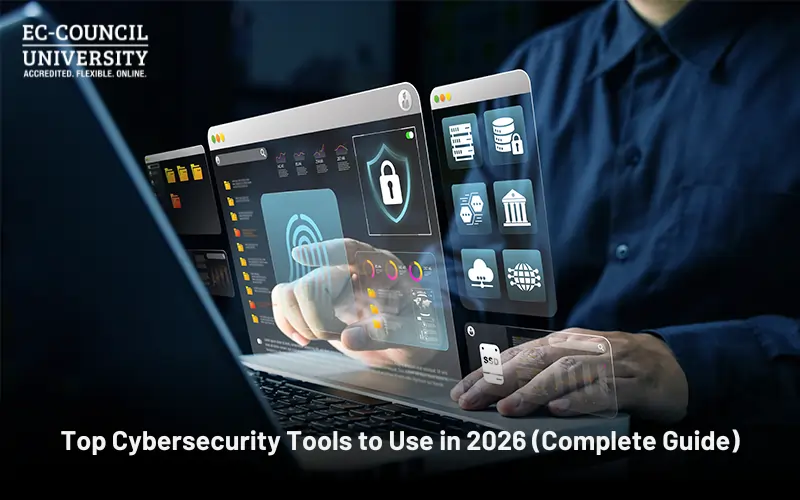Insider threats are a huge concern for organizations worldwide. Unlike external attacks, these threats originate from within the organization, often involving trusted employees, partners, or vendors. Organizations must understand the nature of these threats, their impact, and strategies to prevent and mitigate them.
What is an Insider Threat in Cybersecurity?
What Are the Different Types of Insider Threats
1. Malicious Insiders
2. Negligent Insiders
3. Compromised Insiders
What is the Impact of Insider Threats
- Financial Losses: Insider threats due to theft, fraud, or operational disruptions can result in substantial financial loss to business.
- Reputational Damage: Organizations may suffer reputational damage, resulting in lost customer trust, diminished industry credibility, and reduced business opportunities.
- Legal and Compliance Issues: Cyberattacks causing breaches lead to fines and legal consequences due to violations of regulations like GDPR or HIPAA.
Strategies to Prevent Insider Threats
1. Implement Strong Authentication
2. Real-time Monitoring of User Activity
Using real-time monitoring and behavioral analytics helps identify unusual activities that may indicate potential insider threats and help with early threat detection.
3. Limit Access Grants Based on Roles
Establish a process of least privilege, granting employees limited access to information only necessary for their roles.
4. Conduct Regular Cybersecurity Training
Educate and train your employees about security best practices and the risks of insider threats to reduce negligent behaviors.
5. Establish Clear Policies and Consequences
Define acceptable use policies and the repercussions for violating them to deter malicious actions.
Modern Solutions of Behavioral Analytics for Insider Threat
Insider threats are sophisticated, and traditional cybersecurity tools often fail to identify and effectively combat modern insider threats. So, organizations are now adopting behavioral analytics and AI-driven security solutions to detect abnormal user activity before it escalates into a breach.
1. Proactive Threat Detection
Conventional security systems rely on predefined rules or known attack signatures. Insider threats, however, involve legitimate users performing actions that seem normal on the surface. However, behavioral analytics establishes a baseline normal behavior for every user and system. Any deviation from this, such as accessing files outside work hours, downloading unusual volumes of data, or connecting from an unfamiliar location, automatically triggers an alert. So, instead of relying solely on known attack patterns, the cybersecurity teams can identify behavioral anomalies and detect subtle insider risks that might otherwise go unnoticed.
2. AI and ML Technology for Insider Threat Management
Artificial Intelligence (AI) and Machine Learning (ML) technologies are adopted by many organizations for insider threat prevention in 2025. Modern tools like User and Entity Behavior Analytics (UEBA) platforms leverage machine learning algorithms to:
- Analyze data in real time.
- Correlate user activities across emails, endpoints, and cloud platforms.
- Identify hidden patterns of risk that human analysts might miss.
Solutions from platforms like Microsoft Sentinel, Splunk UEBA, and Exabeam are helping organizations move from reactive monitoring to predictive insider threat management, reducing the mean time to detect (MTTD) incidents drastically.
3. Zero Trust Architecture
Implementing Zero Trust Security Architecture, where no user or device is inherently trusted, complements the behavioral analytics perfectly. The Zero Trust frameworks ensure that even if an insider account is compromised, its access remains limited and monitored.
For example, an employee trying to access sensitive data from an unfamiliar device, location, or outside regular work hours will trigger an immediate re-authentication or a process that denies access altogether.
4. Automation Systems
Modern solutions, such as Security Orchestration, Automation, and Response (SOAR) solutions, play a vital role in insider threat response. When a behavioral anomaly is detected, the system triggers automated workflows that can instantly:
- Restrict user access.
- Notify the Security Operations Center (SOC).
- Launch a forensic analysis to verify intent and impact.
This automation not only shortens response time but also reduces alert fatigue among analysts, which is a significant issue in large-scale enterprise environments.
5. Cloud Security and Identity Intelligence
As hybrid and remote work environments continue to expand, insider threats are increasingly targeting cloud infrastructures. Cloud-native security tools like Google Chronicle, AWS GuardDuty, and Microsoft Defender for Cloud Apps integrate behavioral analytics with identity intelligence to monitor:
- Abnormal login patterns.
- Data exfiltration to personal cloud storage.
- Unauthorized API access and more.
Modern solutions enable more adaptive, contextual, and scalable insider threat detection across cloud environments.
6. Predictive Insight
While technology is advancing rapidly, human behavior remains at the core of insider risk. Behavioral analytics detects anomalies and also predicts why employees might act maliciously or negligently.
By integrating HR data, access logs, and psychological indicators such as sudden performance drops or policy violations, organizations can gain predictive insights into insider risk factors. This predictive model enables cybersecurity and HR teams to take proactive measures through engagement, policy review, or with limited access before a potential insider threat occurs
Behavioral analytics and AI-powered insider threat detection are the next-gen cybersecurity defense. By combining real-time data analytics, automation, and human awareness, organizations can build a proactive, adaptive defense system that minimizes both accidental and malicious insider risks.
Why is Upskilling Crucial in Context of Insider Threats?
1. Understand Emerging Threats
Insider threats are not just about disgruntled employees stealing data. It also includes complex scenarios where employee credentials are compromised due to social engineering or inadvertent negligence. Upskilling helps teams stay updated on the latest tactics, techniques, and procedures (TTPs) insiders use, enabling quicker identification and response.
2. Enhance Threat Detection and Response Capabilities
Advanced training equips security professionals with skills to implement sophisticated monitoring tools, behavioral analytics, and anomaly detection systems that can spot subtle insider threat signals early, before damage is done.
3. Security-Aware Workforce
Conduct regular cybersecurity training and education to upskill employees in the organization. When employees are trained, the risk of negligent insiders decreases, as they understand how their actions impact security and know what red flags to report.
4. Bridging the Talent Gap in Cybersecurity
Upskilling existing employees is a strategic way to build internal expertise, particularly in areas such as insider threat mitigation and cybersecurity.
5. Compliance and Risk Management
Many industries are subject to various compliance and regulatory mandates to implement security measures and protect against cyber-attacks, such as insider threats. Upskilling employees help organizations meet these regulatory standards.
Continuous learning ensures that security teams are aware of the relevant compliance frameworks and security policies and up to date with evolving techniques related to insider threat management. Moreover, upskilling is a proactive defense mechanism that strengthens technical defenses, enhances human awareness, and fosters a culture of cybersecurity excellence, directly countering insider threats.
Stay Ahead of the Hidden Danger of Insider Threat
Insider threats rank among the top cybersecurity challenges for enterprises in the year 2025. Technology and human intelligence must work hand in hand to combat cybersecurity threats. Continuous monitoring, behavior-based analytics, and skilled cybersecurity professionals form the foundation of modern insider threat mitigation. Organizations must implement proactive security measures and foster a security culture within the organization to stay ahead of threats.







